SHERRIE LEVINE
Equivalents: After Stieglitz 1–18
2006
Epson inkjet prints
18 images, each: 19 x 13 inches (48.3 x 33 cm)
framed: 20 3/4 x 14 3/4 x 1 1/4 in. (52.7 x 37.5 x 3.2 cm)
Edition of 12, 3 AP
ARG# LSH2006-001
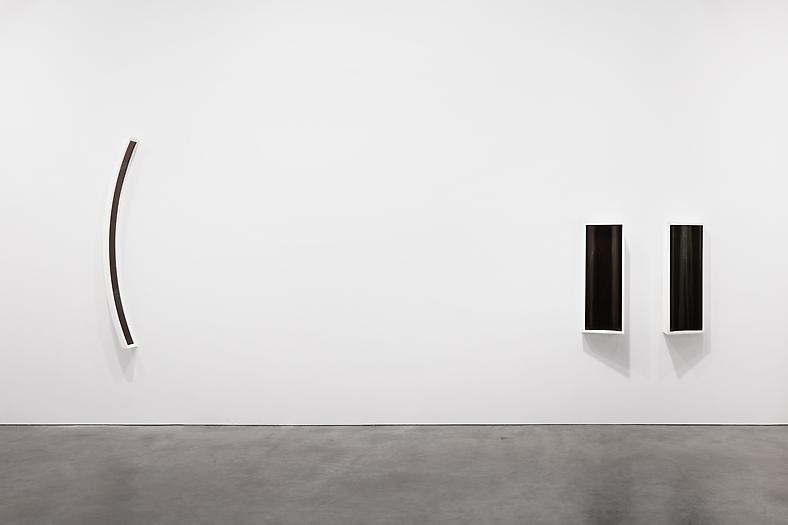
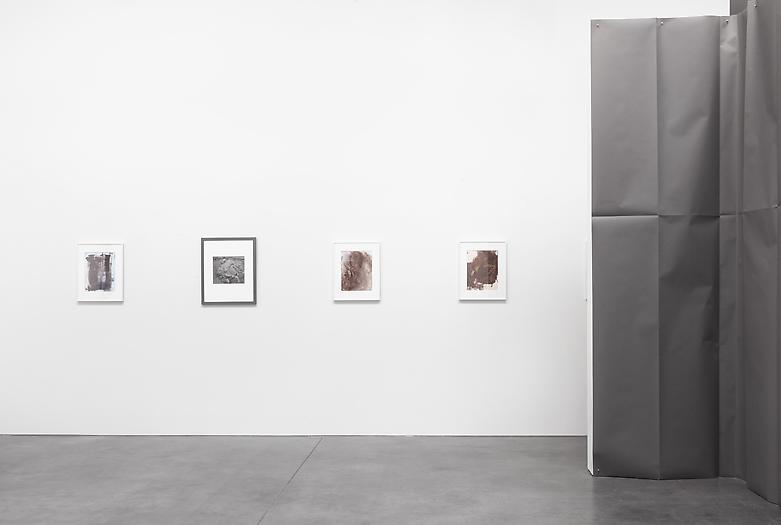
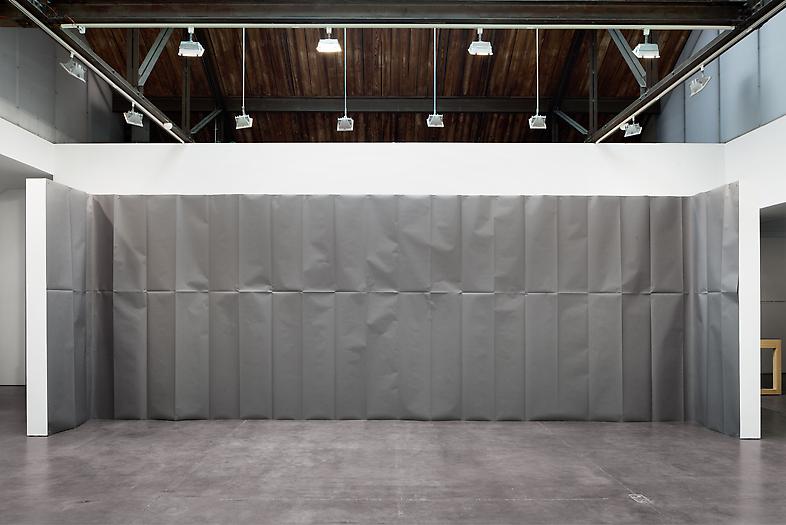
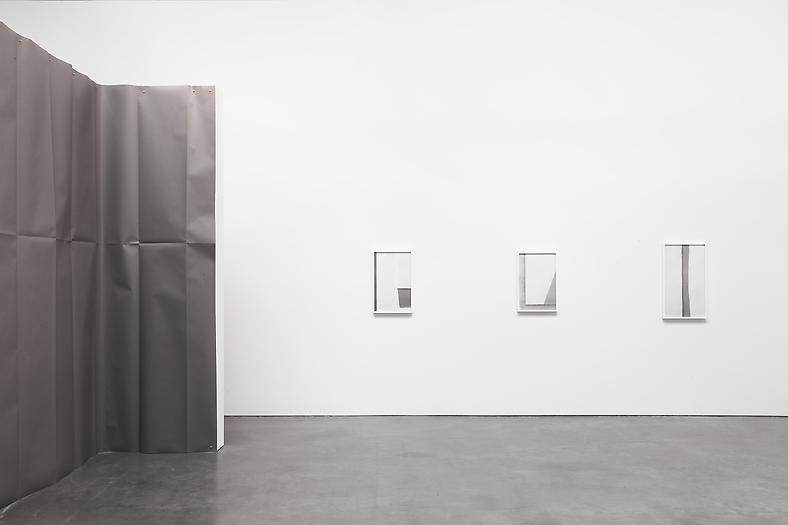
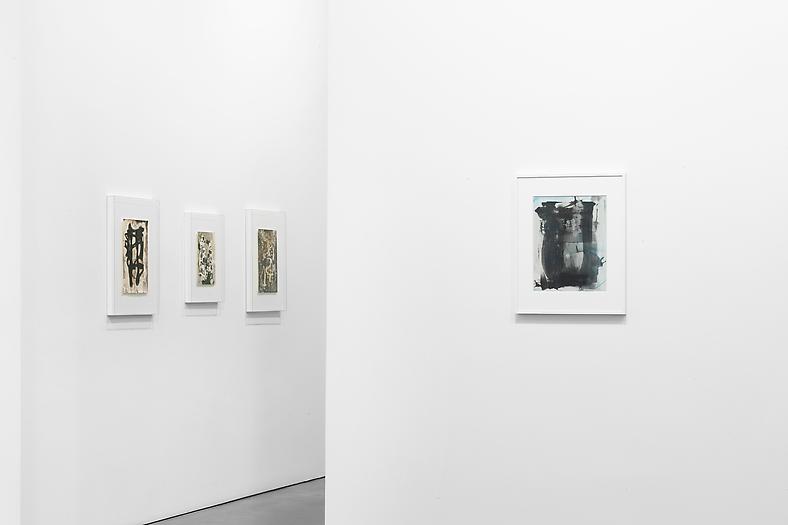
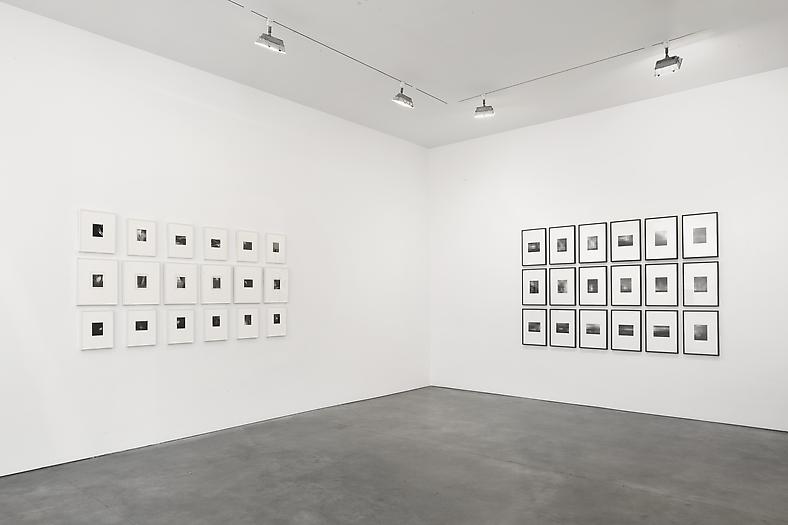
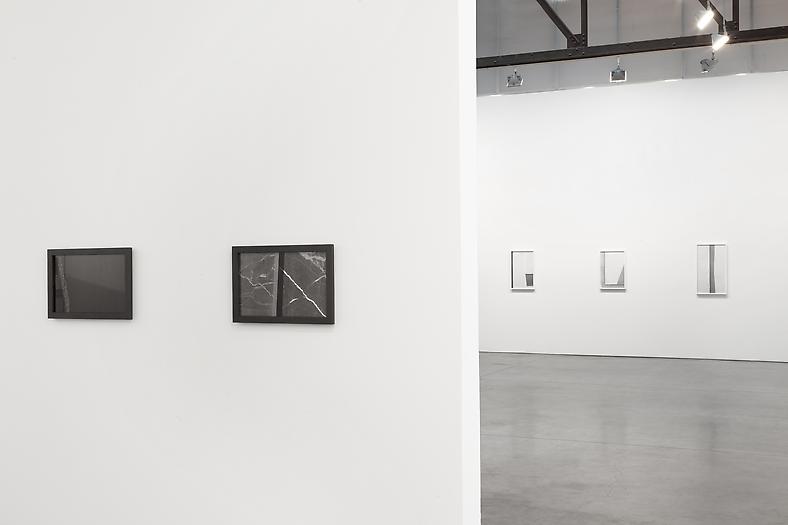
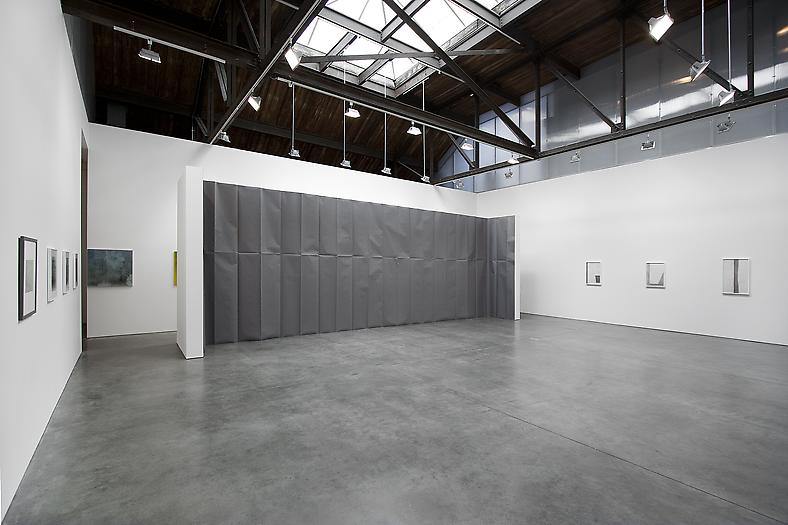
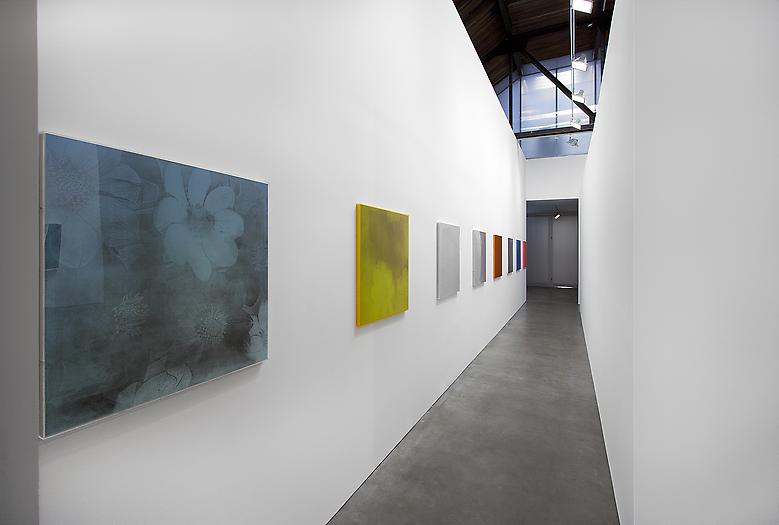
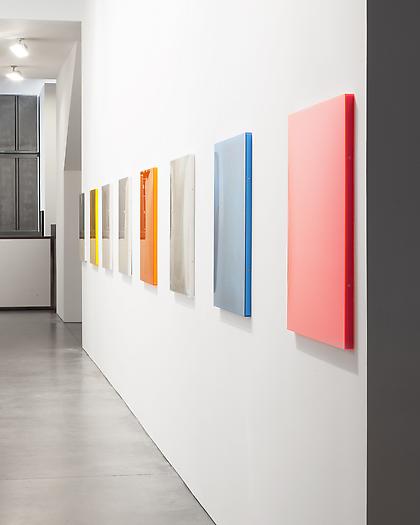
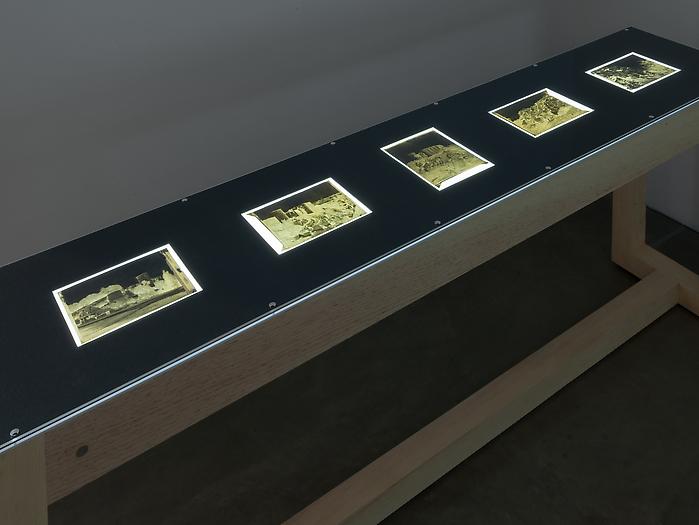
Andrea Rosen Gallery is thrilled to announce Back Grounds: Impressions Photographiques (2), a historically rooted exhibition organized with Olivier Renaud-Clément that traces a profound lineage of conceptual, process-based photography. Ranging from early experimentations of the early 19th century in France to our contemporary era, this exhibition juxtaposes pioneering historical legacies with divergent contemporary trajectories, as a means of building a contextual foundation for the experience and re-experience of such work. The resulting orchestration is an intimately curated dialogue between artists Liz Deschenes, Martin d’Orgeval, Gaylen Gerber, Chargesheimer, Sherrie Levine, Baron Adolphe Humbert de Molard, Alfred Stieglitz, and James Welling, which traverses between realms of methodology and intention, and channels attention to the processes of looking.
Built from the foundation of five early paper negatives by Baron Adolphe Humbert de Molard (b. 1800), first exhibited as part of a three-person show originally presented ten years ago at Andrew Kreps Gallery, New York and Galerie Nelson, Paris, this expanded exhibition further investigates a premise that expounds the ways in which our perception of such work, historically bound to context and experience, has shifted over time, and continues to generate a discursivity and evaluation of content. “One thing to remember,” states Renaud, “is that in the earliest stages of the medium, the practitioners were not necessarily artists per se or even photographers, but curious experimentalists and chemists who had yet to realize the potential of a new medium that had barely come to life. Today, somehow, in our digital age, it seems we have come full circle and are re-addressing this with the lessons and facts of history.”
Beginning in the 1800s, at a time when photography was inherently experimental, such venture into abstraction, as present in de Molard’s fragile, golden images of William the Conqueror’s Normandy Castle, was an unusual attempt. Attracted to the chemical medium, de Molard experimented with alternative fixing baths and chemical processes, producing what may be perceived definably as both artifacts of a developing technique and the artworks of an amateur pioneer.
Over a century later, Chargesheimer’s silver gelatin chemigrams introduce early techniques of painting with chemicals on light-sensitive papers, creating liquid, abstract scapes conditionally belonging to a medium understood as representing reality. Re-presenting such early methods, James Welling’s works move towards the reanimation of historical approaches; presenting both chemigram surfaces, as well as pristinely isolated autobiographical scenes documented with large format cameras.
Alfred Stieglitz’s significant body of work Equivalents (1925-1934), shifts our gaze to consume both expansive and claustrophobic images of the sky, of dissipating and cumulating clouds, provoking, as Stieglitz described, an awareness of the awesome infinity beyond our existence. In an act to re-place historical content before contemporary audiences, Sherrie Levine’s reprisal of iconic imagery, such as Stieglitz’s Equivalents, provokes questions of authorship, originality, and artistic lineage, and encourages work to be experienced anew.
The natural abstractions of Martin d’Orgeval’s wall photographs, developing a specific idea of frame, space and relief through a concern for metaphysical interiority, address subtle and complex issues of perspective. By interacting with the photographed shadows in the image, the real cast shadows of the salient frame create a coalescence of figurative and real spaces, activating the symbolic tension between materiality and immateriality.
Renaud-Clément’s presentations of Gaylen Gerber’s work in this exhibition foreground its more relative qualities. Renaud-Clément presents Gerber’s “contextual” Backdrop, which normally is a ground to the whole exhibition, as an object itself sited on a constructed partition. He also presents a series of “discrete” photographic works in a way that underscores their contextual reading. This unusual reprise uses two bodies of work that take different forms but address similar concerns, drawing attention to the permeability of the distinction between the contextual and the discrete and suggests that everything in the exhibition may be considered both background and subject.
Working to expand the dialogue surrounding photography, Liz Deschenes extends unique viewing experiences that explore the self-reflexive concepts of the medium. As one of the three artists who comprised Renaud’s first exhibition in 2002, Deschenes has presented significant and distinct bodies of new work with each incarnation: Blue Screen Process (2002), Black and White (2003), and for this exhibition, a new body of works that stem from the photographs recently exhibited in Bracket (London) at Campoli Presti.
Olivier Renaud-Clément dedicates this exhibition to Philip Nelson, with whom he organized the first exhibition in Paris in 2002.
Liz Deschenes was born in 1966 in Boston, Massachusetts. Her work will be the subject of a solo exhibition at the Walker Art Center in October 2014. Recent exhibitions include Secession, Vienna; National Gallery of Denmark; and Fotomuseum Winterthur, Switzerland. Her work is in the permanent collections of Centre George Pompidou, Paris; MoMA, New York; Whitney Museum of American Art; The Metropolitan Museum of Art; The Walker Art Center; and the Art Institute of Chicago, among others. Deschenes lives and works in New York.
Martin d’Orgeval was born in 1973 in Paris, France. His work has been exhibited internationally at such institutions as Maison Européenne de la Photographie, Paris; Musée de la Chasse et de la Nature, Paris; Villa Oppenheim, Berlin; Museo Archeologico Nazionale, Naples; Galerie Hussenot, Paris; Adamson Gallery, Washington; Pace Gallery, Beijing. d’Orgeval lives and works in Paris.
Gaylen Gerber was born in 1955 in McAllen, Texas. Recent solo exhibitions and cooperative projects include Kunstverein Ruhr, Essen, Germany; Musee d'Art Moderne Grand-Duc Jean, Luxembourg; The Art Institute of Chicago; Neues Museum Weserburg Bremen, Germany; Kunsthalle Bern, Switzerland; Fonds Regional d'Art Contemporain de Bourgogne; and Musee des Beaux-Arts, Dijon, France. Gerber lives and works in Chicago.
Chargesheimer (1924–1971) was born in Cologne, Germany. Photographer, painter, sculptor, stage designer, graphic designer, exhibition designer, and one- time opera director, Chargesheimer, born Karl Heinz Hargesheimer, photographed post-war Cologne, extensively creating numerous books. His images of the city, its people, and portraits of significant figures, are both expressively dynamic works of art and historic documents of post -war Germany.
Baron Adolphe Humbert de Molard (1800–1874) was born in Paris, France. He took up photography in 1843 using the daguerreotype, and later in the mid 1850s, became one of the first French photographers to use the calotype, a technique on paper developed in England by Fox Talbot, and introducing the principle of positive and negative.
Sherrie Levine was born in 1947 in Hazleton, Pennsylvania. Solo exhibitions of her work have been organized by San Francisco Museum of Modern Art; Philadelphia Museum of Art; Portikus, Frankfurt; Museum of Contemporary Art, Los Angeles; Kunstverein, Hamburg; The Getty Research Institute, Los Angeles; and Hirshhorn Museum, Washington, D.C., among others. Her work has been represented at Documenta 7, the Whitney Biennial, Sydney Biennial, Carnegie International, and São Paulo Bienal. Levine lives and works in New York and Santa Fe.
Alfred Stieglitz (1864–1946) was born in Hoboken, New Jersey. As photographer, critic, dealer and theorist, Stieglitz had a decisive influence on the development of modern art in America during the early 20th century. His photographs are in the permanent collections of the National Gallery of Art, Washington, D.C.; the Metropolitan Museum of Art; MoMA, New York; Philadelphia Museum of Art; and Art Institute of Chicago, among others.
James Welling was born in 1951 in Hartford, Connecticut. Recent exhibitions include a mid-career retrospective at the Cincinnati Art Museum, traveling to the Hammer Museum, Los Angeles and Fotomuseum, Winterthur, as well as solo exhibitions at Palais des Beaux-Arts, Brussels; Museum of Contemporary Art, Los Angeles; and Sprengel Museum, Hannover. His work is in the permanent collections of Centre Georges Pompidou, Paris; Los Angeles County Museum of Art; Metropolitan Museum of Art; MoMA, New York; Solomon R. Guggenheim Museum, New York; Tokyo Metropolitan Museum of Photography; and Whitney Museum of American Art.
For media inquiries please contact Lance Brewer at l.brewer@rosengallery.com or Jen Joy at jen@suttonpr.com
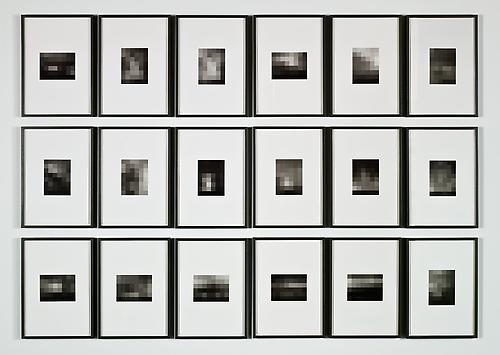
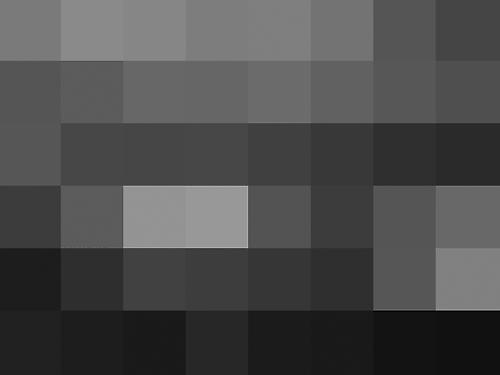
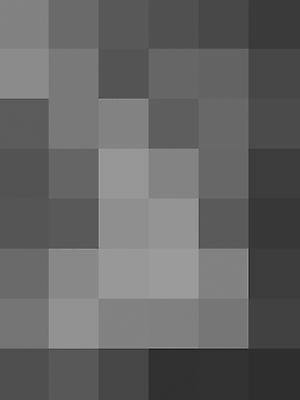
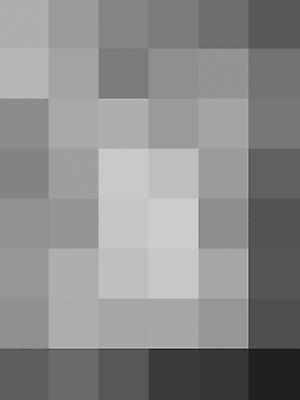
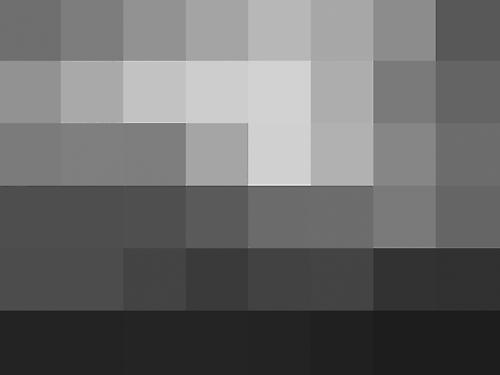
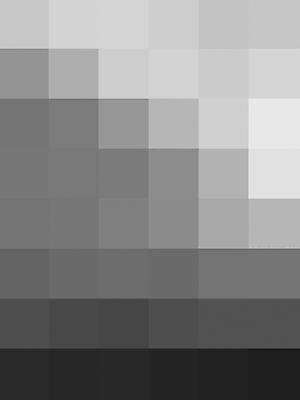
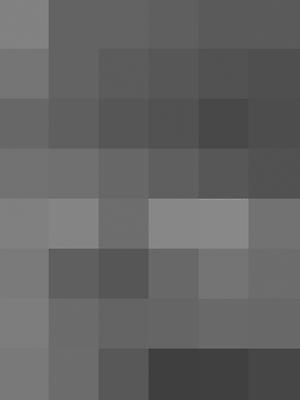
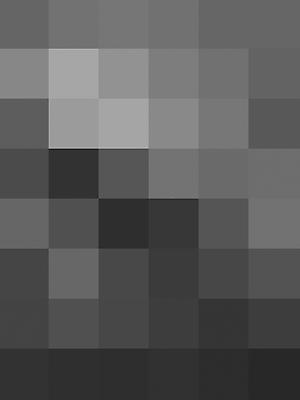
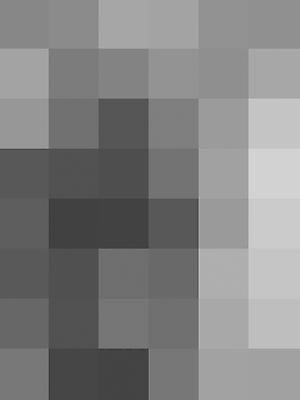
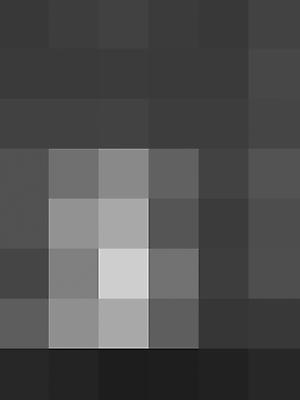
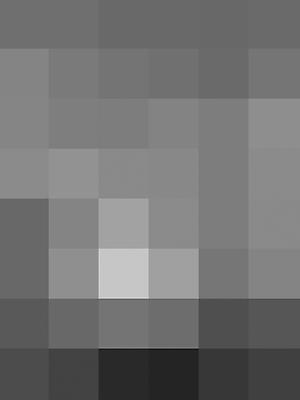
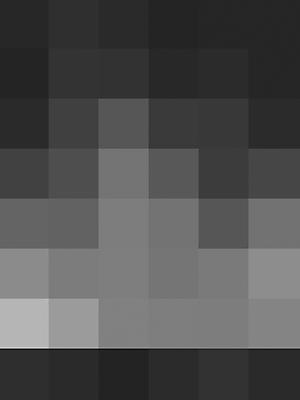
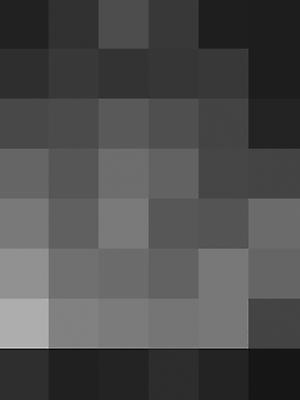
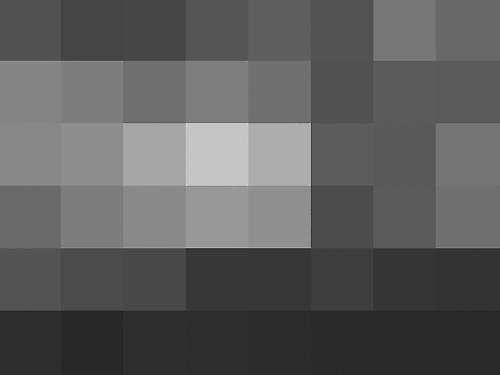
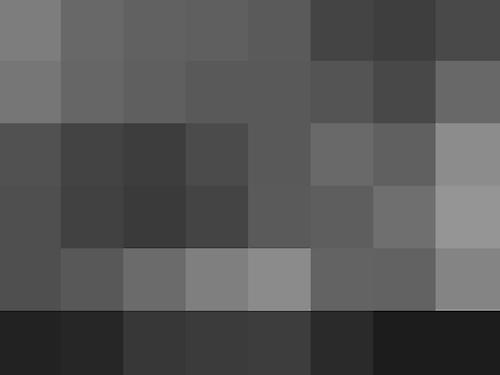
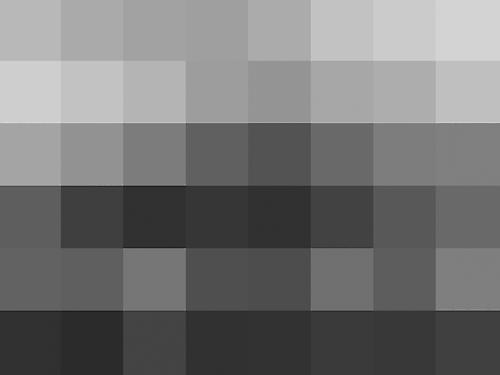
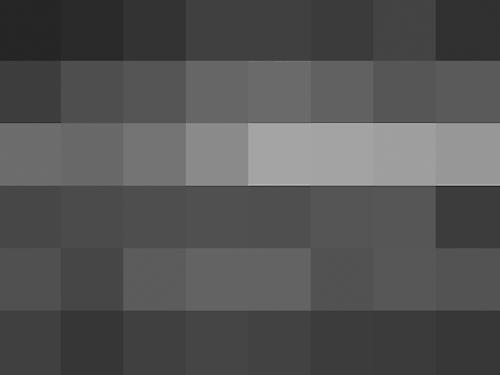
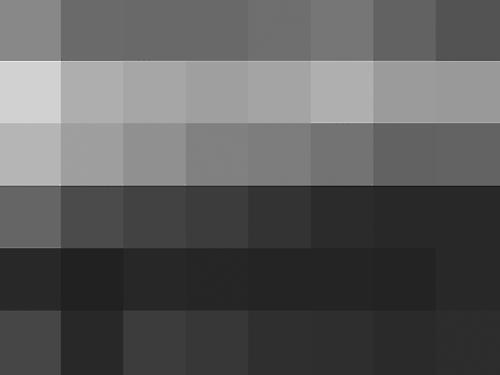
Equivalents: After Stieglitz 1–18
2006
Epson inkjet prints
18 images, each: 19 x 13 inches (48.3 x 33 cm)
framed: 20 3/4 x 14 3/4 x 1 1/4 in. (52.7 x 37.5 x 3.2 cm)
Edition of 12, 3 AP
ARG# LSH2006-001
Harlekinade
1961
vintage gelatin silver chemigram
12 1/8 x 9 5/8 inches (30.8 x 24.4 cm)
Plexi frame: 20 1/2 x 18 x 1 7/8 inches (52.1 x 45.7 x 4.8 cm)
ARG# CC1961-001
Untitled
1961
vintage gelatin silver chemigram
15 5/8 x 11 3/4 inches (39.7 x 29.8 cm)
Plexi frame: 25 x 21 x 1 7/8 inches (63.5 x 53.3 x 4.8 cm)
ARG# CC1961-002
Voodoo
1961
vintage gelatin silver chemigram
15 1/2 x 11 5/8 inches
(39.4 x 29.5 cm)
Plexi frame: 24 7/8 x 21 x 1 7/8 inches (63.2 x 53.3 x 4.8 cm)
ARG# CC1961-003
Untitled
1848
paper negative
10 x 7 3/8 inches (25.4 x 18.7 cm)
ARG# HMA1848-002
Untitled
1848
paper negative
7 1/4 x 9 3/4 inches (18.4 x 24.8 cm)
ARG# HMA1848-003
Untitled
1848
paper negative
7 1/4 x 9 3/4 inches (18.4 x 24.8 cm)
ARG# HMA1848-004
Untitled
1848
paper negative
7 x 9 1/2 inches (17.8 x 24.1 cm)
ARG# HMA1848-005
Untitled
1848
paper negative
7 1/4 x 9 7/8 inches (18.4 x 25.1 cm)
ARG# HMA1848-006
bracket (new york) 1
2014
Unique silver- toned, black and white photogram
in artist’s frame
Frame: 84 x 5 1/2 inches (213.4 x 14 cm)
ARG# WEJ2014-001
bracket (new york) 3
bracket (new york) 4
2014
Unique silver- toned, black and white photograms
in artist’s frame
Overall dimensions vary with installation
Two parts, each: 44 1/4 x 17 x 4 3/8 inches (112.4 x 43.2 x 11.1 cm)
Overall as installed at the gallery: 44 1/4 x 52 1/2 x 4 3/8 inches (112.4 x 133.4 x 11.1 cm)
ARG# DL2014-005
Linea Alba I
2014
gelatin silver print with artist frame
32 1/4 x 18 1/2 x 1 15/16 inches
(81.9 x 47 x 4.9 cm)
Edition of 5 with 2AP
ARG# DOM2014-001
Linea Alba II
2014
gelatin silver print with artist frame
26 15/16 x 17 1/8 x 1 15/16 inches
(68.4 x 43.5 x 4.9 cm)
Edition of 5 with 2AP
ARG# DOM2014-002
Linea Alba IX
2014
gelatin silver print with artist frame
25 5/8 x 17 1/8 x 1 15/16 inches
(65.1 x 43.5 x 4.9 cm)
Edition of 5 with 2AP
ARG# DOM2014-009
Screenshot (Black Mirror) #1
2014
gelatin silver print with artist frame
Silver print: 12.8 x 20.5 inches (32.5 x 52 cm)
Frame: 15 3/4 x 23 3/8 inches (40 x 59.4 cm)
Edition of 5 with 2AP
ARG# DOM2014-010
Screenshot (Diagonal Grey) #1
2014
gelatin silver print with artist frame
Silver print: 12.8 x 20.5 inches (32.5 x 52 cm)
Frame: 15 3/4 x 23 3/8 inches (40 x 59.4 cm)
Edition of 5 with 2AP
ARG# DOM2014-012
Untitled (Clear Sky)
1991
gelatin silver print, Plexiglas frame fabricated from a souvenir from Daniel Buren’s Crossing Through the Colors, a work in situ, 2006
31 3/8 x 31 3/8 inches (79.5 x 79.5 cm)
ARG# GEG1991-001
Untitled (Clear Sky)
1991
Gelatin silver print, Plexiglas frame fabricated from a souvenir from Daniel Buren’s Crossing Through the Colors, a work in situ, 2006
31 3/8 x 31 3/8 inches (79.5 x 79.5 cm)
ARG# GEG1991-002
Clear Sky/House
1995-1996
Gelatin silverprint, charcoal, Plexiglas frame
31 x 31 inches (78.8 x 78.8 cm)
ARG# GEG1996-001
Untitled (Clear Sky)
1992
Gelatin Silver photograph
31 15/16 x 31 15/16 inches (81.1 x 81.1 cm)
ARG# GEG1992-001
Clear Sky/Flower
1997
Ilfachrome print, Plexiglas frame fabricated from a souvenir from Daniel Buren’s Crossing Through the Colors, a work in situ, 2006
31 3/8 x 31 3/8 inches (79.5 x 79.5 cm)
ARG# GEG1997-001
Clear Sky/Flower
1997
Ilfachrome print, charcoal, Plexiglas frame
31 x 31 inches (78.8 x 78.8 cm)
ARG# GEG1997-002
Clear Sky/Garden Addition
1997
Ilfachrome print, charcoal, Plexiglas frame
31 x 31 inches (78.8 x 78.8 cm)
ARG# GEG1997-003
Clear Sky/Green Area
1998
Ilfachrome print, Plexiglas frame fabricated from a souvenir from Daniel Buren’s Crossing Through the Colors, a work in situ, 2006
31 3/8 x 31 3/8 inches (79.5 x 79.5 cm)
ARG# GEG1998-001
Backdrop/Back grounds: Impressions Photographiques (2)
2014
background paper, aluminum pins
Dimensions vary with installation
Edition of 6
ARG# GEG2014-001
Equivalents: After Stieglitz 1–18
2006
Epson inkjet prints
18 images, each: 19 x 13 inches (48.3 x 33 cm)
framed: 20 3/4 x 14 3/4 x 1 1/4 in. (52.7 x 37.5 x 3.2 cm)
Edition of 12, 3 AP
ARG# LSH2006-001
Equivalent (Songs of the Sky P2)
1923
vintage gelatin silver print mounted to board and mounted to larger board
image, paper and mount: 4 5/8 x 3 5/8 inches (11.7 x 9.2 cm)
board: 13 1/2 x 10 5/8 inches (34.3 x 27 cm)
ARG# STA1923-003
© 2014 Estate of Alfred Stieglitz / Artists Rights Society (ARS), New York
Songs of the Sky
1924
Gelatin silver print
3 5/8 x 4 9/16 inches (9.2 x 11.6 cm)
Private Collection
ARG# STA1924-001
© 2014 Estate of Alfred Stieglitz / Artists Rights Society (ARS), New York
Equivalent - ES2
Late 1920s
Gelatin silver print
Sheet: 4 1/2 x 3 9/16 inches (11.4 x 9 cm)
Mount: 12 7/16 x 9 11/16 inches (31.6 x 24.6 cm)
Philadelphia Museum of Art: From the Collection of Dorothy Norman, 1985
ARG# STA1925-001
© 2014 Estate of Alfred Stieglitz / Artists Rights Society (ARS), New York
Equivalent
1925
Gelatin silver print
4.65 x 3.62 inches (11.8 x 9.2 cm)
Collection of George Eastman House (Part purchase and part gift from Georgia O'Keefe)
ARG# STA1925-002
© 2014 Estate of Alfred Stieglitz / Artists Rights Society (ARS), New York
Equivalent
1925
Gelatin silver print
3.66 x 4.69 inches (9.3 x 11.9 cm)
Collection of George Eastman House (Part purchase and part gift from Georgia O'Keefe)
ARG# STA1925-003
© 2014 Estate of Alfred Stieglitz / Artists Rights Society (ARS), New York
Equivalent
1929
Gelatin silver print mounted to board
4 3/4 x 3 5/8 inches (12.1 x 9.2 cm)
ARG# STA1927-003
© 2014 Estate of Alfred Stieglitz / Artists Rights Society (ARS), New York
Equivalents
1927
gelatin silver print
3 11/16 x 4 5/8 inches (9.4 x 11.7 cm)
Private Collection
ARG# STA1927-005
© 2014 Estate of Alfred Stieglitz / Artists Rights Society (ARS), New York
Equivalent
1925 / 1927
vintage gelatin silver print mounted to board and mounted to larger board
image, paper and mount: 4 5/8 x 3 5/8 inches (11.7 x 9.2 cm)
board: 13 7/8 x 10 3/4 inches (35.2 x 27.3 cm)
ARG# STA1927-006
© 2014 Estate of Alfred Stieglitz / Artists Rights Society (ARS), New York
Equivalent HH₁
1929
Gelatin silver print
Image and sheet: 4 3/4 × 3 3/4 inches (12.1 × 9.5 cm)
Mount: 13 1/2 x 10 1/4 inches (34.3 x 26 cm)
Philadelphia Museum of Art: From the Collection of Dorothy Norman, 1997
ARG# STA1929-002
© 2014 Estate of Alfred Stieglitz / Artists Rights Society (ARS), New York
Equivalent
1929
Gelatin silver print
4.65 x 3.66 inches (11.8 x 9.3 cm)
Collection of George Eastman House (Part purchase and part gift from Georgia O'Keefe)
ARG# STA1929-005
© 2014 Estate of Alfred Stieglitz / Artists Rights Society (ARS), New York
Equivalent
1929
Gelatin silver print
11.8 x 9.2 inches (30 x 23.4 cm)
Collection of George Eastman House (Part purchase and part gift from Georgia O'Keefe)
ARG# STA1929-006
© 2014 Estate of Alfred Stieglitz / Artists Rights Society (ARS), New York
Equivalent
1930
Gelatin silver print
4.69 x 3.62 inches (11.9 x 9.2 cm)
Collection of George Eastman House (Part purchase and part gift from Georgia O'Keefe)
ARG# STA1930-001
© 2014 Estate of Alfred Stieglitz / Artists Rights Society (ARS), New York
Equivalent
1930
Gelatin silver print
3 5/8 x 4 9/16 inches (9.2 x 11.6 cm)
Private Collection
ARG# STA1930-002
© 2014 Estate of Alfred Stieglitz / Artists Rights Society (ARS), New York
Equivalent
1931
Gelatin silver print
Image and sheet: 3 5/8 × 4 9/16 inches (9.2 × 11.6 cm)
Mount: 13 5/8 × 11 inches (34.6 × 27.9 cm)
Philadelphia Museum of Art
ARG# STA1931-001
© 2014 Estate of Alfred Stieglitz / Artists Rights Society (ARS), New York
Equivalent
1931
Gelatin silver print
4.69 x 3.66 inches (11.9 x 9.3 cm)
Collection of George Eastman House (Part purchase and part gift from Georgia O'Keefe)
ARG# STA1931-002
© 2014 Estate of Alfred Stieglitz / Artists Rights Society (ARS), New York
Equivalent, Series XX No. 9
1929 (negative); 1932 (print)
Gelatin silver print
Image and sheet: 4 5/8 x 3 5/8 inches (11.7 x 9.2 cm)
Mount: 13 11/16 x 10 7/8 inches (34.8 x 27.6 cm)
Philadelphia Museum of Art: From the Collection of Dorothy Norman, 1967
ARG# STA1932-001
© 2014 Estate of Alfred Stieglitz / Artists Rights Society (ARS), New York
Equivalent
1934
Gelatin silver print
Image and sheet: 4 5/8 x 3 5/8 inches (11.7 x 9.2 cm)
Philadelphia Museum of Art: From the Collection of Dorothy Norman, 1967
ARG# STA1934-001
© 2014 Estate of Alfred Stieglitz / Artists Rights Society (ARS), New York
Equivalent, Set C₂ No.4
1929 (negative); 1935 (print)
Gelatin silver print
Image and sheet: 4 5/8 × 3 5/8 inches (11.7 × 9.2 cm)
Philadelphia Museum of Art: From the Collection of Dorothy Norman, 1985
ARG# STA1935-001
© 2014 Estate of Alfred Stieglitz / Artists Rights Society (ARS), New York
Granite Outcrop, Harriman, WY
1992
Toned gelatin silver print
Framed: 23 5/8 x 19 1/2 x 3/4 inches (60 x 49.5 x 1.9 cm) Paper: 11 x 13 7/8 inches (27.9 x 35.2 cm)
Image: 9 3/4 x 11 1/2 inches (24.8 x 29.2 cm)
Edition of 3
ARG# WEJ1992-002
Chemical
2013
Unique chemigram with ink
14 x 11 inches (35.6 x 27.9 cm)
Framed: 20 1/2 x 16 1/2 x 1 1/8 inches (52.1 x 41.9 x 2.9 cm)
ARG# WEJ2013-002
Chemical
2013
Unique chemigram
14 x 11 inches (35.6 x 27.9 cm)
Framed: 20 1/2 x 16 1/2 x 1 1/8 inches (52.1 x 41.9 x 2.9 cm)
ARG# WEJ2013-004
Chemical
2014
Unique chemigram with acrylic
14 x 11 inches (35.6 x 27.9 cm)
Framed: 20 1/2 x 16 1/2 x 1 1/8 inches (52.1 x 41.9 x 2.9 cm)
ARG# WEJ2014-002
Chemical
2014
Graphite and acrylic on rag paper
14 x 11 inches (35.6 x 27.9 cm)
Framed: 20 1/2 x 16 1/2 x 1 1/8 inches (52.1 x 41.9 x 2.9 cm)
ARG# WEJ2014-003

















